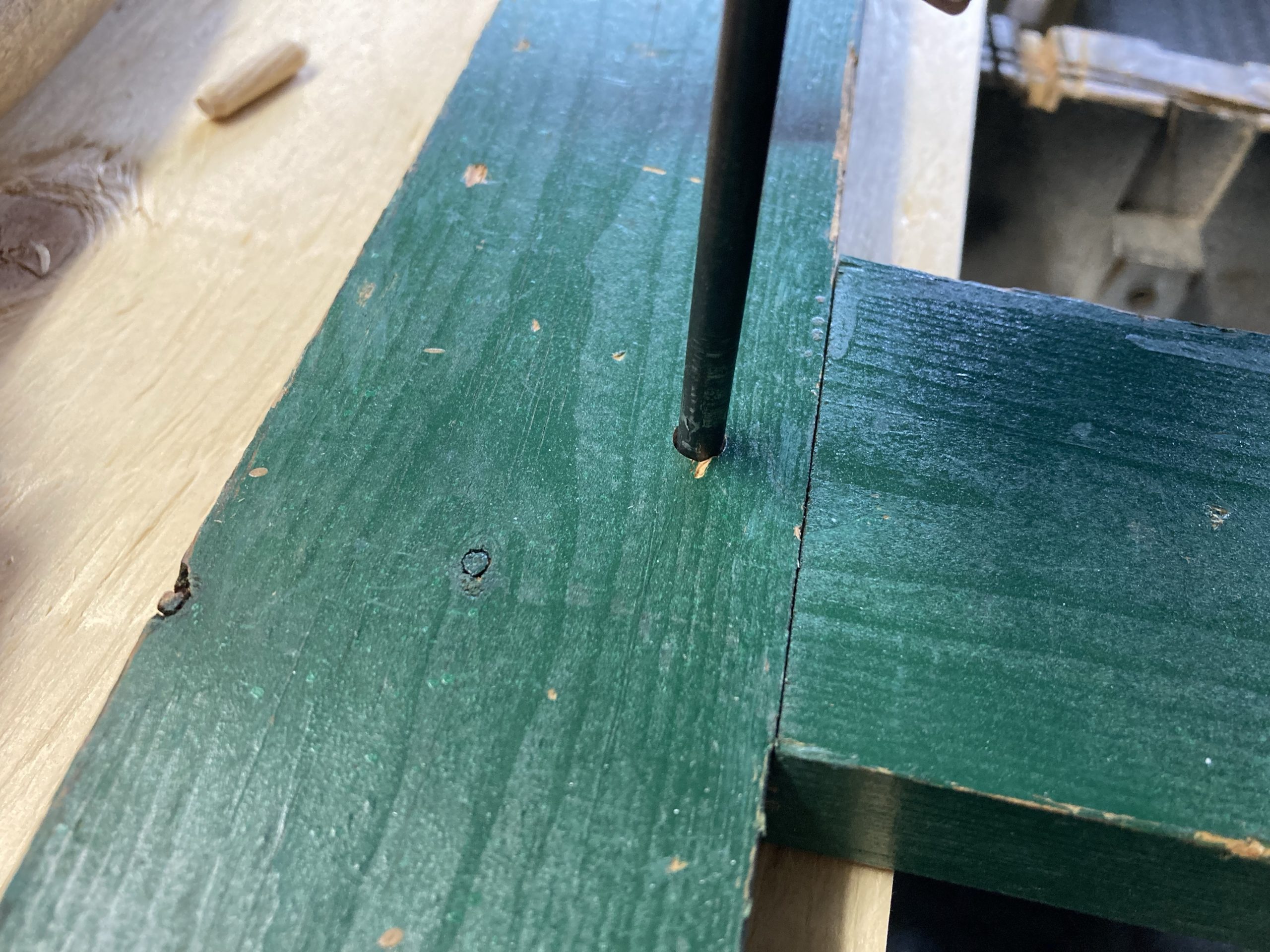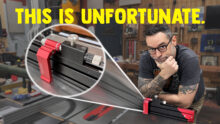I built four Krenov-style sawhorses about ten years ago and they have served me well. I made them from softwood lumber (pine, I think) using through mortise and tenon joinery. I wedged the tenons of the stretcher, but elected not to reinforce the leg-to-foot joints.
Recently, on a couple of the horses, those leg-to-foot joints failed and as a result, the horses wobbled. Still, the large shoulder of the tenon provided enough support that they would bear weight fine, and the friction between the components was enough to keep the feet from falling off when lifted. However, if lateral forces were applied (e.g. planing), the sawhorse would rack.
To fix them, I first knocked off the feet with a mallet. Examining the joint, I could see that the glue had held and the wood failed. To reattach the foot, I decided to use more wood glue and a draw bored pin for reinforcement (this is a wooden pin right through the joint in slightly offset holes so that the parts are mechanically held tightly).
After marking a suitable location for the peg, ensuring that there was adequate material on all sides of both the mortise and tenon, I drilled right through the foot (which was mortised) with a 1/4 inch brad point drill bit.
To mark the location of the slightly-offset hole on the tenon, I installed the foot on the end of the leg and used a slightly-smaller (7/32 inch) transfer punch held tightly towards the top of the mortise and gave it a tap to mark the centre of the next hole.

I drilled a 1/4 inch hole on this mark and assembled the joint with more wood glue. For the drawbore peg, riven oak dowel is traditional, but I elected to use a simple, ready-made 1/4 inch fluted joiner dowel with pre-chamfered ends. I seated the dowel with a few swings from a steel hammer.
This repair was simple and quick, requiring only a handful of tools and about ten minutes to repair four joints. I used:
- Mallet
- Combination square
- Pencil
- Drill press
- 1/4 inch brad point bit
- 7/32 inch transfer punch
- Wood glue
- 1/4 inch fluted joinery dowels
- Steel hammer
I know many others like to over-build everything, and there are merits to that approach. However, by slightly under-building, we get the opportunity to learn the limits and failure points of the design and processes we use. How else can we learn these valuable insights?




